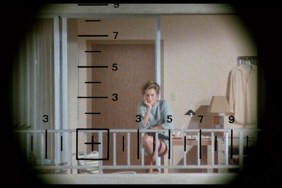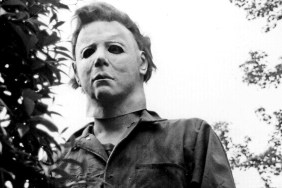
UK-based teacher, actor, musician and fearful film enthusiast Nigel Parkin presents a new SHOCK column charting covert perversion in classic horror films.
In the spirit of the season allow me to ring the doorbell of your subconscious and treat your mind to a trick. Forget everything you know about John Carpenters HALLOWEEN. Forget everything we ultimately discover about the familial connections between Laurie and Michael. Forget everything about final girls and conservative moral readings that see the whole slasher genre as a tract about punishment for casual sex.
For now, as the hour of Samhain approaches let your thoughts run to something deeper, darker, messier. This is a film about sexual dementia. Twisted, destructive, terrifying irresistible! Laurie Strode isnt the final girl shes the only girl. The whole film is the fevered projection of her burgeoning sexual awareness and confused desires. When we first see her walking to the Myers house to deliver a key for potential buyers we see any number of fairy tale children stepping onto the tree-lined path through the dangerous woods on a journey to a house of mystery, threat and dark promise. And just look at those trees! Towering, stripped standing in perfect, barely tamed contrast to the neat houses. With her brown hair Laurie is at one with the leaves blowing around her she is the embodiment of fallen nature. She is naturally fascinated by the Myers house; it is the representation of all that is hidden within her. We hear breathing within as she stands outside. We hear it because she hears it the interior of that house, with its shadowed suggestions of sex and death, is the interior of Lauries mind, the mind of a girl who is superstitious, frustrated and desperately aroused.
Michael Myers does not return to Haddonfield because he escapes from an asylum. He returns because Laurie wills him there. Arguably even the asylum is a projection, invented by Laurie as a physical place from which she can spit out this monstrous sexual force and bring it into her waking world accompanied by a doctor who can conveniently work as the voice of her Freudian conscience. And what is prompting all this? Laurie has been brought to boiling point by the sexual fever of her friends, who are freely describing to her their plans for a night of carnal pleasure. Unwittingly these friends are joining with Laurie in a suburban witchs coven little do they realise that the strength of their conversation and their own desires, mixed with Lauries mighty hunger, will be enough to create a spell to awaken the most terrible demon.

Laurie is very quickly involved in a sexual danse macabre with this faceless demon. And in presenting this Carpenter has great fun with Gothic imagery. How often have we seen the female victims of vampires writhing on their beds beside an open window, curtains blowing in a fierce wind as a symbol of all that is exposed, open and unconsciously aroused? Carpenter ushers this melodramatic device into the quiet daylight of small town America. We see the curtains of Lauries bedroom blowing in a wind we know only too well. Those curtains mirror the various items on the washing line outside bed sheets, underwear. Thus the explicit connection is drawn between Lauries curtains and fabric that is normally close to her body. All this fabric (call it the fabric of intimacy if you like!) is now disturbed. Laurie looks through the open window of her desire and what does she see? Michael standing between the two washing lines, the fabric of intimacy blowing around him, against him. Hes between her sheets!
At this stage the vision is too frightening for Laurie. She symbolically closes her window and retreats. But she knows she wont keep him away.
Of course she also knows that her friends exist in a far greater state of sexual awareness and readiness than she does and that is why in her mind he visits them first. And silences them!
Having prepared the mental and physical space for their ultimate encounter Laurie is then assailed by fresh doubts and fears. This is most powerfully symbolized by their struggle in a closet. The closet, of course, represents the internal space in which Laurie holds all her deepest and darkest impulses. Trapped in there by his reaching hands she is forced to see herself in the most revealing light. Turning a wire clothes hanger into a weapon is a powerful symbolic gesture. This is an object designed to hold a garment; taken on its own, therefore, it becomes a symbol of being unclothed. That sense of nakedness is what she now uses to repel Michael.

But hes got her this far. They are ready for a perverse consummation. And just as it is about to happen the Freudian conscience appears and fires a whole load of what are soon revealed to be impotent blanks into Michael.
Laurie knows he is not lying on the lawn below. She doesnt have to look to know this. And as she reflects on this she brings her hands to her face. We hear her sobbing and gasping as we hear the ubiquitous presence of Michael breathing in all the corners of her mind.
I remember once reading a fresh perspective on that other classic portrait of American small town horror, Its a Wonderful Life, in which the critic suggested that George Baileys manic grin in the final shot was the desperate face of a man in sheer terror, plunging into an abyss as he realised he really was trapped in his little life. I dont agree with that but I love being offered the challenging perspective. In the same spirit, I would like to leave you with this thought Lauries sobs and gasps at the end of this film are not just the sounds of a girl in terror and despair. Somewhere in there, as twisted and sharp as the hanger of her nakedness, there is the sound of desire









